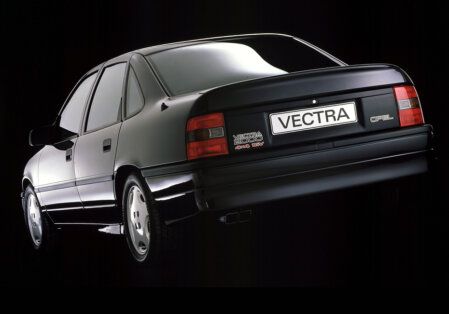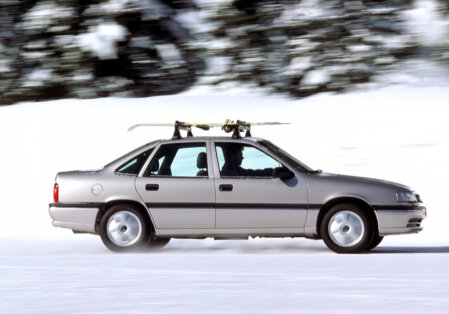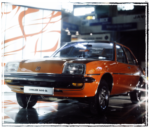Ascona B
Debut and Body Styles
The second-generation Opel Ascona B made its public debut at the 1975 Frankfurt Motor Show, marking a significant evolution in Opel’s mid-size offering. Designed as a practical yet stylish saloon, the Ascona B was available in two- and four-door sedan configurations. Unlike its predecessor, the Ascona A, there was no estate (Caravan) version in this generation—a decision that aligned it more closely with its sporting sibling, the Opel Manta B, which offered two- and three-door coupé variants on the same GM U-car platform.
Engine Options and Performance Evolution
Under the bonnet, the Ascona B initially retained the engine lineup from the Ascona A, ranging from 1.2L to 1.9L petrol units. However, in 1978, the 1.9L engine was enlarged to 2.0L, reflecting both market demand and emissions considerations. Opel introduced higher-compression “S” variants of several engines, which required 98-octane fuel and offered improved performance over the standard 90-octane versions. These “S” models were particularly popular in continental Europe, where high-octane fuel was more readily available.
Injection and Diesel Innovations
A notable technical advancement came with the 2.0 E model, which featured Bosch L-Jetronic electronic fuel injection—a relatively advanced system for the time. This not only improved fuel efficiency and throttle response but also helped Opel meet tightening emissions regulations. In the same year, a 2.0L diesel engine was added to the range, broadening the Ascona’s appeal to fleet buyers and long-distance drivers, particularly in markets like Germany and France where diesel was gaining popularity.
🇬🇧 Market Differences and Engine Availability
The engine range was broader than that of the Vauxhall Cavalier Mk1, which shared the same platform but was tailored to the UK market. Not all Ascona B engines were offered in Britain, partly due to fuel grade availability and market segmentation. For example, the 1.2L and some high-compression variants were not officially imported.
Production Run and Lasting Legacy
Production of the Ascona B continued until August 1981, with over 1.2 million units built across Opel’s European plants. Its success was bolstered by its solid engineering, rear-wheel-drive layout, and versatility across trims—from basic fleet models to the high-performance Ascona 400 rally homologation special. The Ascona B’s legacy lives on in enthusiast circles, particularly among clubs like the Vauxhall Cavalier Drivers Club, where its shared DNA with the Cavalier Mk1 continues to be celebrated.

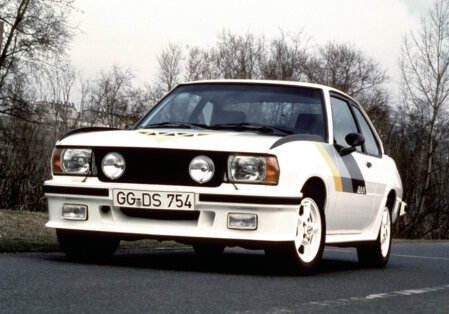
Manta B
Launch and Design Origins (1975)
The second-generation Opel Manta, known as the Manta B, was introduced in August 1975. It retained the classic two-door “three-box” coupé silhouette but was now based on the newly redesigned Opel Ascona B platform. While mechanically similar to the Ascona, the Manta B distinguished itself with a sportier exterior, most notably a droop-snoot nose—a design cue absent from the Ascona B but familiar to UK buyers as it was standard on the Vauxhall Cavalier Mk1. Despite the shared underpinnings, Opel chose not to market the Manta under the Vauxhall brand in the UK. However, the Vauxhall Cavalier Sports Hatch and Coupé used the same body shell, effectively offering British buyers a Manta in all but name.
Engine Range and Early Performance
At launch, the Manta B offered a range of engines:
- 1.2L OHV (entry-level, mostly for continental markets)
- 1.6L CIH (Cam-In-Head)
- 1.9L CIH
Not all engines were available in the UK, with the 1.2L and some high-compression variants omitted due to market preferences and fuel compatibility.
GT/E Evolution and Fuel Injection (1976–1979)
In 1976, Opel adapted the GT/E engine from the Manta A into the Manta B lineup, creating the Manta B GT/E. This model featured Bosch L-Jetronic fuel injection, offering improved throttle response and emissions compliance.
By 1979, the GT/E received a significant upgrade:
- The 1.9L CIH was replaced by a 2.0L CIH.
- The new Bosch injection system boosted output to 110 bhp (82 kW).
- The 2.0L S variant, using a Varajet II carburettor, became Opel’s most widely used engine at the time, also appearing in the Opel Rekord.
Hatchback Introduction and Design Influence (1977)
Originally, Opel had planned a shooting brake-style hatchback for the Manta B, inspired by cars like the Reliant Scimitar. However, after reviewing the Vauxhall Cavalier Sports Hatch proposal, Opel opted to adopt that design instead. The result was the Manta B Hatchback, launched in 1977, which complemented the existing two-door coupé and broadened the model’s appeal.
Facelift and Engine Overhaul (1982)
In 1982, both the coupé and hatchback received a comprehensive facelift:
- Plastic front spoiler, quad air intakes, and side skirts for GT/E and GSi models.
- A small rear wing added aerodynamic flair.
- Chrome trim was largely phased out in favour of a cleaner, more modern look.
The engine lineup was also revised:
- The 1.2L, 1.6L, and 1.9L engines were discontinued.
- New options included:
- 1.3L OHC
- 1.8L OHC (from the Ascona C)
- 2.0L S and E CIH (carburetted and injected)
In the UK, the GT/E badge was retained, while in Europe, the same model was badged as the GSi.
Efficiency and Market Adaptation (1982–1987)
The 1.8L OHC engine, introduced in 1982, was a key addition:
- Offered improved fuel economy (up to 14 km/l).
- Compatible with unleaded petrol, making it future-proof for the time.
- Remained in production until 1987, becoming a popular choice for everyday drivers.
By 1984, the 2.0S models were phased out, leaving the GSi/GT/E as the sole variant with the larger engine.
Final Edition: The Manta Exclusive (1986–1988)
In 1986, Opel launched the Manta Exclusive, the final and most comprehensively equipped version of the Manta B:
- Recaro seats with red cloth inserts and grey leather-effect trim.
- Full Irmscher body kit from the i200 series:
- Twin round headlights in plastic housings
- Front and rear spoilers
- Side skirts
- Iconic three-piece rear spoiler from the Manta 400, generating 80 kg of downforce at 200 km/h.
The Exclusive was available in blue or silver, and only the GSi/GT/E Exclusive remained in production during the final two years.
End of the Line and Legacy
Production of the Manta B ceased in 1988, outlasting its Ascona B and Cavalier Mk1 siblings, which had already transitioned to front-wheel drive. The Manta’s spiritual successor, the Vauxhall Calibra, arrived shortly after—but with front-wheel drive and a more modern design ethos, it marked a clear departure from the Manta’s rear-drive heritage.
The Manta B remains a beloved classic, especially among enthusiasts and clubs like the Vauxhall Cavalier Drivers Club, where its shared DNA with the Cavalier Mk1 continues to be celebrated.
Opel Manta B Special Editions: A Legacy of Performance.
During the 1980s, Opel and Irmscher collaborated to produce a series of limited-edition Manta B models, each with its own unique character and purpose. These included the i200, i240, i240xx (also known as i300), and the legendary Manta 400—a Group B rally homologation special. While the i200 was the only one officially sold in the UK, the others were rare continental offerings that have since become cult classics.
🇬🇧 Manta B i200 (1984–1986)
- Developed by Irmscher and Opel Motorsport as a road-going tribute to the Manta 400.
- Powered by a 2.0L CIH engine producing around 110 bhp, using Bosch L-Jetronic fuel injection.
- Featured a distinctive Irmscher body kit, including:
- Twin round headlights in plastic housings
- Front and rear spoilers
- Side skirts
- 3-piece rear spoiler inspired by the Manta 400
- Interior upgrades included Recaro seats, unique trim, and Irmscher badging.
- Sold in limited numbers, with the UK receiving only a small allocation, making it a prized find today.
🇩🇪 Manta B i240 (1984–1986)
- A more powerful evolution of the i200, fitted with a 2.4L CIH engine producing 136–144 bhp.
- Not homologated for Group B, but built to similar standards for road use.
- Available in Polar White or Astro Silver, with the Blitz interior and full Irmscher styling.
- Built to order and assembled at Opel’s Antwerp plant, making it a rare and bespoke model.
- Upgraded suspension and brakes to handle the increased power.
DE Manta B i240xx / i300 (1984–1986)
- The most extreme of the Irmscher specials, the i300 was fitted with a 3.0L straight-six from the Opel Monza/Omega.
- Produced in very limited numbers—only nine known examples, with just one RHD unit imported to the UK.
- Used unfinished Manta 400 bodyshells, modified to accommodate the heavier engine and Getrag 265 gearbox.
- Performance was exceptional for the time, with 177 bhp in standard tune and options for over 200 bhp.
- Featured:
- Vented front discs with larger calipers
- Limited-slip differential
- Recaro interior with Opel Sport cloth
- Optional Irmscher leather steering wheel and full body kit
DE Manta 400: Group B Homologation Hero (1981–1984)
- Built to homologate Opel’s entry into FIA Group B rallying, the Manta 400 was a true motorsport thoroughbred.
- Powered by a 2.4L Cosworth-developed DOHC 16-valve engine, producing 144 bhp in road trim.
- Only 245 road-going examples were built, with just 59 featuring the wide-arch Irmscher body kit.
- Shared its underpinnings with the Ascona 400, which had WRC success with Walter Röhrl.
- Though outclassed by AWD rivals like the Audi Quattro, the Manta 400 remained competitive in national and European rallying, especially in the hands of drivers like Jimmy McRae and Russell Brookes.
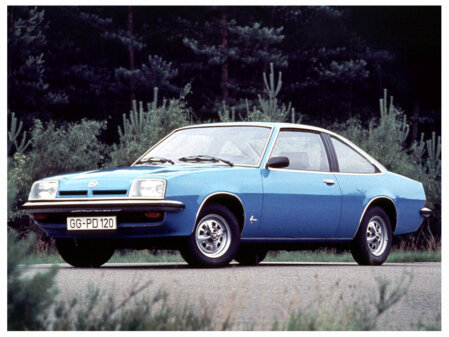
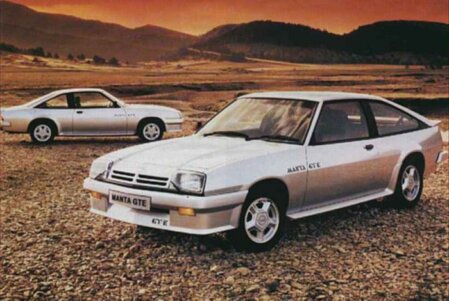
Ascona C
Continental Cousins: Ascona C
The Opel Ascona C, launched in 1981, was the European-market counterpart to the Vauxhall Cavalier Mk2. Both were based on GM’s global J-car platform, but while they shared core architecture and body styles, the specification and equipment levels diverged significantly depending on the market.
🇩🇪 Euro-Spec Ascona C: Quietly Advanced
The Opel Ascona C in continental Europe was often better equipped than the UK's Cavalier Mk2, especially in markets like Germany, Switzerland, and Scandinavia, where buyers expected more comfort and innovation:
- Heated front seats were available in higher trims—particularly in colder regions.
- Some models featured early stop-start technology, a rarity for the era. This system would shut off the engine at idle (e.g. traffic lights) and restart it when the clutch was engaged—an early nod to fuel efficiency and emissions control.
- Optional extras included trip computers, headlamp washers, rear headrests, and even central locking with delay timers—features that were either rare or entirely absent from the UK Cavalier Mk2 lineup.
Under the Skin
- SOHC Family I and II engines, but the Ascona C had a broader range of diesel options, including a 1.6L Isuzu-derived unit.
- The Cavalier Mk2 estate was unique to the UK, using a rear section adapted from the Holden Camira, whereas Opel never offered an Ascona estate.
Legacy and Enthusiast Appeal
Today, the Ascona C is often overshadowed by its rear-wheel-drive predecessor, but it played a crucial role in Opel’s transition to front-wheel drive. Its subtle tech advantages and solid build quality made it a favourite among continental buyers, while the Cavalier Mk2 became a fleet car legend in the UK.
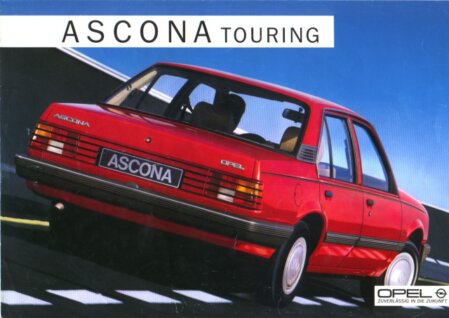
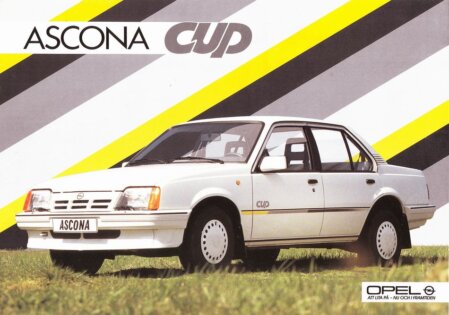
Vectra A
Introduction and Design
The Opel Vectra A debuted in October 1988, replacing the long-serving Opel Ascona C. Designed by Wayne Cherry, it was built on the GM2900 platform and offered in 4-door saloon and 5-door hatchback forms. A coupé version, the Opel Calibra, followed in 1989, sharing the same underpinnings. Interestingly, left-hand drive Vectras were built at Vauxhall’s Luton plant for export to Europe.
Suspension and Drivetrain
- Front-wheel drive was standard, with four-wheel drive available on select 2.0L models.
- Suspension featured MacPherson struts up front and a torsion beam rear on FWD models.
- AWD versions used a fully independent rear suspension with semi-trailing arms.
Facelift and Safety
A facelift in 1992 brought updated grilles, rear trim, and improved crash protection. Driver airbags became available from 1993, reflecting growing safety expectations.
The Vectra A was replaced by the Vectra B in the middle of 1995.
